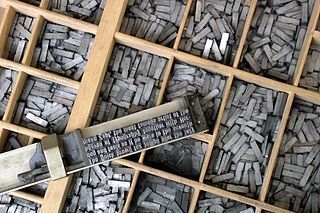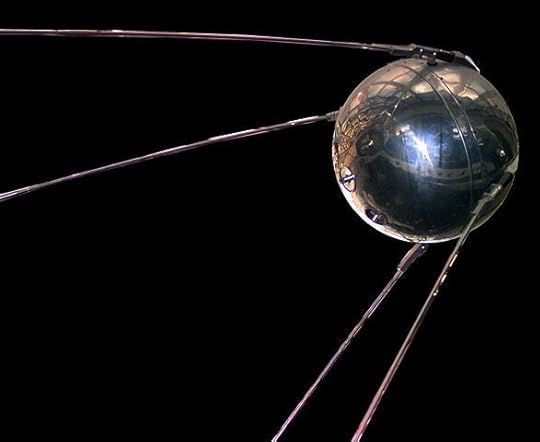Kate Rauner's Blog, page 21
June 15, 2021
Lost Apple Project Scores #citizenscientist #history #agriculture
In the fall, in Mimbres Valley farmers markets in southwest New Mexico, I can buy Red Delicious apples. And they are… delicious, that is. Not those mealy things found in supermarkets. That’s because there are orchards here with trees over 80 years old. Apparently, the Pacific Northwest has its own bounty.

There were once at least 17,000 named varieties of apples in North America, but only about 4,500 are known to exist today. By the 20th century, farmers stopped growing most apple types.
The Lost Apple Project [is] a nonprofit organization that searches abandoned farms and orchards in the Pacific Northwest to locate old varieties. Benscoter recently found seven types of apples in old orchards in Oregon, Washington and Idaho that were thought to have gone extinct as long as a century ago. NPR
These old varieties can be identified using a resource from the Federal government I’d never heard of before: the USDA’s Pomological Watercolors Digital Collection. Between 1886 to 1942, 7,584 watercolor paintings of American fruits and nuts were collected, including 3,807 images of apples. That leaves over 13,000 still lost, but maybe a few more will emerge from private collections.
The Project’s finds aren’t simply interesting, they can be useful. “The rediscoveries are a step toward increased genetic diversity of apples. He can test the historic varieties to find out what farmers and buyers will want. The USDA can then piece together that information to help farmers more reliably grow apples, not use as much pesticides and increase nutritional quality.”
Apple trees are often propagated by grafting, so cuttings from the newly rediscovered apples can be rescued immediately. It’s nice to know this piece of history is not lost, and perhaps people can join bears, deer, and squirrels in an annual feast. Congratulations, citizen scientists.
May 17, 2021
China’s on Mars :)
I should have posted this days ago: China has a lander and rover on Mars!
[image error] Earth-bound mockup“Congratulations to CNSA’s #Tianwen1 team for the successful landing of China’s first Mars exploration rover, #Zhurong! Together with the global science community, I look forward to the important contributions this mission will make to humanity’s understanding of the Red Planet.” Thomas Zurbuchen, associate administrator at NASA
Zhurong will use ground-penetrating radar, a laser, and sensors to study Mars’ atmosphere and magnetic field, and look for water ice.
I’m late to the party in offering congratulations to China, but I don’t feel too bad. Even Wikipedia’s entry is paltry at this point. Let’s hope nifty discovers make a bigger impression soon.
May 7, 2021
Mourn With Ghosts #archeology #haiku #sciku
Millennia past,
Carefully buried child,
Lovingly buried?
 https://www.youtube.com/watch?v=TRow1QfRs4w
https://www.youtube.com/watch?v=TRow1QfRs4wIt’s hard for me to imagine what the family’s life was like, but perhaps I could understand their grief.
A purposefully excavated pit followed by intentional covering of the corpse. The child appears to have been prepared for a tightly shrouded burial, placed on one side with knees drawn toward the chest. Even more notable is that the position of the child’s head suggests it rested on some sort of support, like a pillow. CNET
April 21, 2021
Neanderthal’s Ebb and Flow #poem #anthropology #DNA
The floor of a cave
Holds subtle clues,
Genetic remnants
Preserved in the ooze.
Molecular treasures
Hide in dirt layers,
From blood or from skin,
Or lumps of whatever.
Statistical methods
Link populations
Throughout ancient Europe’s
Inter-glacial locations.
When ice returned
The Tree of Life shook,
Layers of soil,
Are leaves
in humanity’s book.
 Classic Neanderthal image from 1920
Classic Neanderthal image from 1920Thanks to sciencemag.org for their article on a report in Science that dirt from Northern Spain has yielded the first nuclear DNA from an ancient human to be gleaned from sediments:
The sequences reveal the genetic identity and sex of ancient cave dwellers and show that one group of Neanderthals replaced another in the Spanish cave about 100,000 years ago, perhaps after a climate cooling. “They can see a shift in Neanderthal populations at the very same site, which is quite nice.”
April 13, 2021
Life in the Dark #sciku #haiku #ocean #deepsea
Infrared photons
Driving photosynthesis
In deep ocean vents
 A black smoker, photographed with artificial light
A black smoker, photographed with artificial lightThanks to Brian Dunning for pointing out this study of bacteria that live in deep sea black smokers – cracks in the ocean floor where heat and chemicals boil up through the darkness. The pressure and temperature down there would seem to make life impossible, but surprise! Certain bacteria do what I think of as something only plants in sunlight can do: photosynthesis. But heat and light are both on the electromagnetism spectrum, so I should have guessed. I love the term for such bacteria: extremophiles.
Brian Dunning’s podcast Skeptoid (with transcripts available too) is one of my favorite sites.
March 31, 2021
A Living Mind #brain #neuroscience #sciku #haiku #poetry
Body acts in World
Your brain is not a machine
World acts on Body
 Spirit infused into a person – as good a metaphor as any
Spirit infused into a person – as good a metaphor as anyEach of us is unique in a more profound way than I ever imaged. Billions of neurons with trillions of interconnections, built on unimaginable numbers of interactions with the environment that no two humans share. You and I may read these same words, but how our brains therefore change is different, and different from every other human being.
This is inspirational, I suppose, because it means that each of us is truly unique, not just in our genetic makeup, but even in the way our brains change over time. It is also depressing, because it makes the task of the neuroscientist daunting almost beyond imagination. For any given experience, orderly change could involve a thousand neurons, a million neurons or even the entire brain, with the pattern of change different in every brain. Aeon
This line isn’t original with me: The mind is what the brain does. As long as my brain is alive, I am. There are no files to duplicate or download, because no computer functions the way I do. Maybe, someday, machines will form their own type of awareness, but that won’t duplicate the human mind. Change is hard, but will abandoning the computer metaphor lead to a revolution in neuroscience?
March 26, 2021
8,000 tons of Space Debris Threaten Modern Life #space
Our daily lives on Earth depend on satellites in space. Weather forecasting, telecommunications, GPS, and increasingly the internet too. But defunct craft, discards from old launches, and smashed debris from collisions are filling the skies. Even astronauts on the International Space Station have to conduct special maneuvers to avoid larger chunks or hide out in their docked Soyuz spacecraft until junk passes by. The sky once seemed so vast, but today, we’ve cluttered it up with millions of pieces of trash.
 Exciting New Space Adventure Coming This Year. Click Now and Sign Up to be Notified
Exciting New Space Adventure Coming This Year. Click Now and Sign Up to be NotifiedWe may even be limiting our ability to travel into space.
Spacecraft to clean up the mess are being designed and tested. Here’s one international effort about to launch from the Baikonur Cosmodrome in Kazakhstan. Ultimately, such craft will attempt to attach to dead satellites and push them toward Earth to burn up in the atmosphere. Eek! I hope they take the size of whatever survives to crash on land into consideration. But first comes a test using two devices:
Using a magnetic docking technology, the servicer will release and try to “rendezvous” with the client, which will act as a mock piece of space junk [and] carry out this catch and release process repeatedly over the course of six months. NPR
What a great basis for science fiction, don’t you think? I’m currently writing a story that launches newly minted pilot Winnie Bravo to clean up space junk. She’s based on the Moon, and there’s more than orbiting debris to worry about. Her space adventure turns deadly. The book will be released later this year, but you don’t have to hold your breath waiting! Subscribe today to my newsletter and I’ll keep you posted, but I’ll never sell your address or pester you with spam (promise, I’m too busy writing.)
March 23, 2021
What’s In a Font? That Which We Call a Letter… #authors #writingtips
Today I’m sharing a self-indulgent item. As a writer (I bet a lot of you know I write scifi,) I see posts that lead us to agonize over what font to use on book covers. For those of you lucky enough to not care, it may be news that:
 I think of “fonts” as beginning with type-setting, but I suppose quality handwriting is an even older issue. Say, I wonder if there were different fonts in cuneiform?
I think of “fonts” as beginning with type-setting, but I suppose quality handwriting is an even older issue. Say, I wonder if there were different fonts in cuneiform?A font is a collection of characters with a similar design. These characters include lowercase and uppercase letters, numbers, punctuation marks, and symbols. TechTerms
The word also has a second definition as a receptacle for baptismal water. That’s quite appropriate, because the wrong font will, the experts all agree, damn your book to oblivion. Without the right font, readers (a flighty, finicky group) will have no idea what genre your book belongs in, whether to be attracted or repelled, and will blithely click away into the quantum foam, leaving a despondent author behind.
Right behind cover fonts comes the agonizing over the font used in the interior of print books and PDF files. Ebook readers save us this worry by having control over the font their digital readers present (thank you, ebook readers.) But not every written work is so lucky, which brings me to this article. Fonts being a weighty matter, allow me to quote at length:
The U.S. Court of Appeals for the District of Columbia Circuit, acting like a picky high school English teacher, announced an amendment to its handbook Tuesday: Briefs will only be accepted if they’re written in 14-point serifed fonts, such as Century or Times New Roman. The courts strictly ‘discourage the use of Garamond.’
People said the harder font took 50 percent longer to read. ‘And when something takes long, people assume it’s complicated, and they don’t want to do it.’
The Supreme Court asks that lawyers write in the “Century family.” The U.S. Court of Appeals for the Seventh Circuit warns against Times New Roman. Slate
There are thousands, probably millions, of fonts available. You are not limited to whatever came with your favorite word processing software. You can buy more fonts. An endless number of fonts. You can spend so much time on fonts, you never write a single word. Eek.
The article I quoted ends with this:
Here’s to hoping the court’s next case takes on another source of impassioned legal argument: two spaces after a period.
Eeeeek. No, please. Not that!
March 17, 2021
Looks Like End of an Era in Space #NASA #spaceexploration #Russia
Politics and science collide all too often.
 Sputnik 1, the first artificial satellite way back in 1957. That got America’s attention.
Sputnik 1, the first artificial satellite way back in 1957. That got America’s attention.China and Russia signed an agreement to work together to develop a lunar research station on or orbiting the Moon, allying Russia with a nation many see as in opposition to U.S. interests in space. Axios
Many countries are setting sights on the Moon, and various allies and competitors will shake out, but it looks like the long-standing US-Russian collaboration in space is at an end. China is booming, Russia is not, and they need a lift. I’m not as clear about what’s in this for China. Access to Russian experts, sure, but the Chinese are making such great strides, both from their own research and sketchier activities, that I don’t see the attraction.
Well, nothing focused the American government like the Cold War Space Race did. I guess we’re going to the Moon.
March 7, 2021
Mars Cam Views from NASA Rover during Red Planet Exploration #Mars2020
Take a look thru Perseverance’s eyes.
Why does the Martian sky look grayish blueish?
The sky is not blue as on Earth because Martian air is extremely thin, and the dust particles in the air are large relative to the wavelength of visible light. The dust particles preferentially absorb blue light and effectively act as mirrors by scattering the remaining wavelengths: this produces the butterscotch color of the atmosphere…
If the Martian atmosphere were free of dust, the daytime sky would appear blue, because of Rayleigh scattering by the molecules (primarily carbon dioxide) that make up the atmosphere. Because the atmosphere is thinner than earth’s atmosphere, the Martian sky would be a darker blue than ours, much as the sky on earth appears at high altitudes with a similar density of air molecules. webexhibits
As amazing as the rovers are, until we can see with our own eyes (and even then, the helmet will probably have some effect on color) only science fiction can put a human on Mars. Try my series about a near-future colony.
In this marvelously detailed journey into the near-future, colonists cling to humanity’s first fragile foothold on the Red Planet, and struggle on through generations, battling the deadly planet and each other. Because no matter how noble the aspirations, how alluring the technologies, survival requires individual intelligence, ingenuity, and courage.
Click here now to read the complete series from Amazon. Get the value priced Box Set in favorite digital formats, at more favorite stores: Click Here and Start Reading Today.





